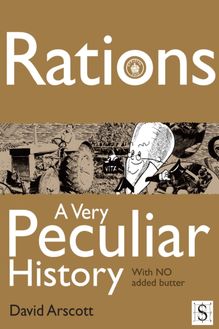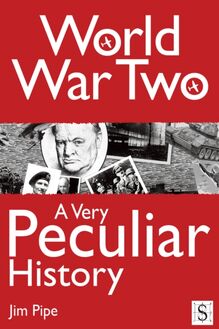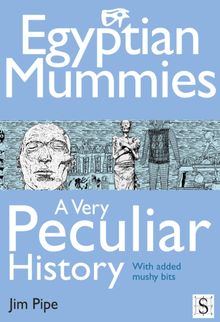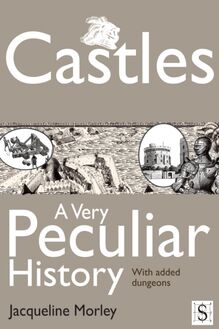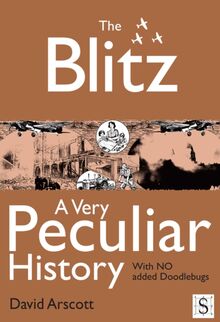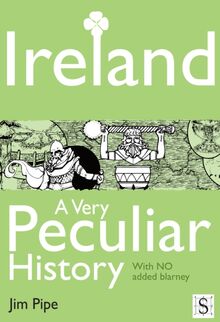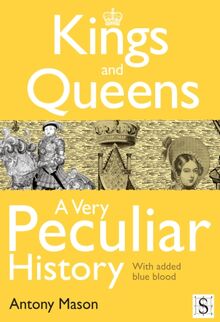Cricket, A Very Peculiar History , livre ebook
63
pages
English
Ebooks
2012
Vous pourrez modifier la taille du texte de cet ouvrage
Obtenez un accès à la bibliothèque pour le consulter en ligne En savoir plus
Découvre YouScribe en t'inscrivant gratuitement
Découvre YouScribe en t'inscrivant gratuitement
63
pages
English
Ebooks
2012
Vous pourrez modifier la taille du texte de cet ouvrage
Obtenez un accès à la bibliothèque pour le consulter en ligne En savoir plus
Publié par
Date de parution
29 février 2012
Nombre de lectures
0
EAN13
9781908759733
Langue
English
Publié par
Date de parution
29 février 2012
Nombre de lectures
0
EAN13
9781908759733
Langue
English
Title Page
CRICKET, A VERY PECULIAR HISTORY
With Added Googlies
Written by
Jim Pipe
Created and designed by David Salariya
Publisher Information
First published in Great Britain in MMXII by Book House, an imprint of
The Salariya Book Company Ltd
25 Marlborough Place, Brighton BN1 1UB
www.salariya.com
www.book-house.co.uk
Digital edition converted and distributed in MMXII by
Andrews UK Limited
www.andrewsuk.com
Editor: Jamie Pitman
Assistant editor: Tobias Short
© The Salariya Book Company Ltd MMXII
All rights reserved. No part of this publication may be reproduced, stored in or introduced into a retrieval system or transmitted in any form, or by any means (electronic, mechanical, photocopying, recording or otherwise) without the written permission of the publisher. Any person who does any unauthorised act in relation to this publication may be liable to criminal prosecution and civil claims for damages.
Every effort has been made to trace copyright holders. The Salariya Book Company apologises for any omissions and would be pleased, in such cases, to add an acknowledgement in future editions.
Visit our website at
www.book-house.co.uk
or go to
www.salariya.com
for free electronic versions of:
You Wouldn’t Want to be an Egyptian Mummy!
You Wouldn’t Want to be a Roman Gladiator!
You Wouldnt Want to Join Shackleton’s Polar Expedition!
You Wouldn’t Want to Sail on a 19th-Century Whaling Ship!
Dedication
To CVN, for paying our wages while we played cricket upstairs. Happy days.
JP
A few reasons to play or watch cricket
•You get all the benefits of the great outdoors, safe in the knowledge that if it starts to rain, you can leg it indoors along with everyone else on the pitch.
•Cricket is tailor-made for the born idler, one of the few pastimes where a whole game can go by without actually having to do anything. While your colleagues are batting, it’s perfectly acceptable to put your feet up or doze off (England cricketer Phil Tufnell was nicknamed ‘the cat’ due to his nap-taking abilities in the dressing room).
•Unlike any other game ever invented, cricket always stops for tea. This pause for rest, repast and reflection is fundamental to the game’s civilising influence on players and fans.
•The satisfaction of hitting the ball clean out of the ground, skittling out rival batsmen or plucking the ball from mid-air for a spectacular catch lives in the mind for days after.
•Not just a retreat from the dull cares of life, cricket instills a range of Zen-like qualities: endless patience, the strength to endure the slings and arrows of outrageous fortune, and the grace to ignore a barrage of insults while at the crease.
•Picturesque cricket grounds abound. Breathe in all that scenery, from fields of sheep to centuries-old churches, while the wind whispers sweet nothings in the trees nearby.
A few reasons not to play or watch cricket
•Cricket whites may be elegant, but running between the wickets with pads on is at best ungainly and at times comical.
•The ‘noble game’ is not all it’s cracked up to be. Professional players shout and scream after a run out or for an LBW decision, throw a tantrum when they’re given out, and whisper obscenities at opposition players.
•Sheer boredom. In 1947, England wicket-keeper Godfrey Evans once spent and hour and 37 minutes at the crease before scoring his first run, while in 1964 Indian bowler Bapu Nadkarni bowled 131 scoreless balls in a row. Yawn.
•Watching a match, Groucho Marx once famously quipped ‘Say, when do they begin’? Some would say he should have asked, ‘When do they finish?’. The ‘timeless’ Test match between England and South Africa at Durban in 1939 was finally abandoned as a draw on the tenth day (after 43 hours of play) because England players had to catch their ship home.
•It’s not really a team game. Playing for Aberdeenshire against West Lothian, Bermudan Alma Hunt took seven wickets for 11 runs then scored the 49 runs needed to win himself in just 25 minutes. Game over.
•Collecting the ball. In a pub league match in Devon, Paul Crabb of Ilfracombe had to chase a ball over a kilometre after it rolled down a steep hill. He brought it back by bus, after the driver kindly overlooked the fact he did not have the 46p fare.
Introduction
‘Cricket is basically baseball on valium.’
Robin Williams, American actor and comedian
‘Baseball has the great advantage over cricket of being sooner ended.’
George Bernard Shaw, Irish writer and playwright
‘I do love cricket – it’s so very English.’
Sarah Bernhardt, French actress
Anyone for cricket?
Why do people enjoy a sport where 22 players loaf about all day? Well…
It’s simple. One player throws a ball, another tries to hit it. To win, all you have to do is score more runs than the opposition.
Yet complicated. With its many ‘laws’, baffling terminology and unusual scoring system, cricket is also a game of immense complexity and beauty, where skill, strategy and raw emotions combine to create a fever-pitch atmosphere. Australian novelist Thomas Keneally called cricket ‘a sort of mystery’. In the early 1930s, when Adolf Hitler decided to use the game to train his troops for war, he rewrote the laws to make them simpler. Clearly the action of a crazed madman.
It’s dramatic. At its best, cricket is soap opera, with a stock of villains and heroes and regular instalments of melodrama, hysteria and nail-biting suspense.
And tribal. When Australia play England, national pride is at stake. When 260 million people sat down to watch India play Pakistan in 2004, patriotic feelings ran high.
It’s varied. My own experience of playing cricket in a local league is straight out of an Agatha Christie novel: the gentle murmur of conversation around the village green, hefted agricultural strokes, ruddy-faced umpires draped with spare sweaters, and scones and cream in the pavilion. The only thing missing was a body laced with arsenic. A modern international, especially the spectacle enjoyed by India’s passionate cricket supporters, is a different beast altogether, a heady brew of thousands of baying spectators, a bowler racing in like an express train to launch a rock-hard missile at the batsman’s head – and the potential for pandemonium if there’s any controversy on the pitch.
Cricket also comes in several flavours: long-lasting five-day Test matches (which purists consider to be the only reputable sort), chewy one day matches with a set number of overs, and for those who like an instant hit, Twenty20 games where each side has just 20 overs to produce an orgy of runs.
It’s unpredictable. When a match lasts for five days, acts of God are two-a-penny, from sudden downpours and bizarre fungal infections to pitch invasions by birds and insects. No wonder cricket has been a favourite with gamblers for hundreds of years. Even when the game slows to a snail’s pace, there is always something going on, a subtle change in fielding positions, how a bowler varies his delivery, or the the careful way a fielder rubs spit onto the ball to make it shine.
Yet, for all its charms, you’ll sometimes hear the uninitiated refer to cricket as – gasp – ‘boring’. Though beauty is in the eye of the beholder, sometimes the ill-informed beholder needs to face the facts: cricket is the second biggest spectator sport on the planet (soccer is the first), watched by a billion or so people, and played by millions in over 100 countries across the world. Once upon a time, it was even the national game of the United States.
So how did it all begin ?
Full contact cricket?
One 10th-century Norse bat and ball game, knatteleik, was played by the Vikings of Iceland. A dawn-to-dusk affair that attracted huge crowds from all over the island, it was one of the roughest games ever invented, and deaths were common:
•There were two teams with captains and probably dozens of players.
•The playing field was a flat ice-covered surface (possibly a frozen pond), with the players using tar and sand under the soles of their boots for traction. Loose balls inevitably skittered a long way over the ice.
•Batters swung at balls of leather or wood (no, the batting helmets weren’t horned).
•Apparently the bat was thin enough to be broken in anger and mended on the spot.
•Body contact was allowed, with opposing players wrestling for control of the ball.
•The ball was hard enough to make an opponent bleed when thrown in anger. Hurled with enough force, it could knock over another player.
•Slagging opponents was a key part of the game (and still is), and several choice outbursts are recorded in Icelandic sagas.
•Despite the carnage, there were some limits. In Snorre’s saga, one player, Tord Blig, is given a life ban due to his ‘bad temper’.
‘Novelty is the one quality required for Christmas games ... If a game is novel it is enough. To the manager of a toy department the continued vogue of cricket must be very bewildering.’
A. A. Milne, author of Winnie-the-Pooh
CHAPTER ONE: Bat meets ball
‘The English are not very spiritual people,so they invented cricket to give them some idea of eternity.’
George Bernard Shaw
Our knowledge of cricket’s origins is hazy at best. As a result, there are more theories about how it all started than you can shake a stick at. At the heart of the game lies a primeval instinct to bash things, which in the Stone Age was a pretty fundamen
